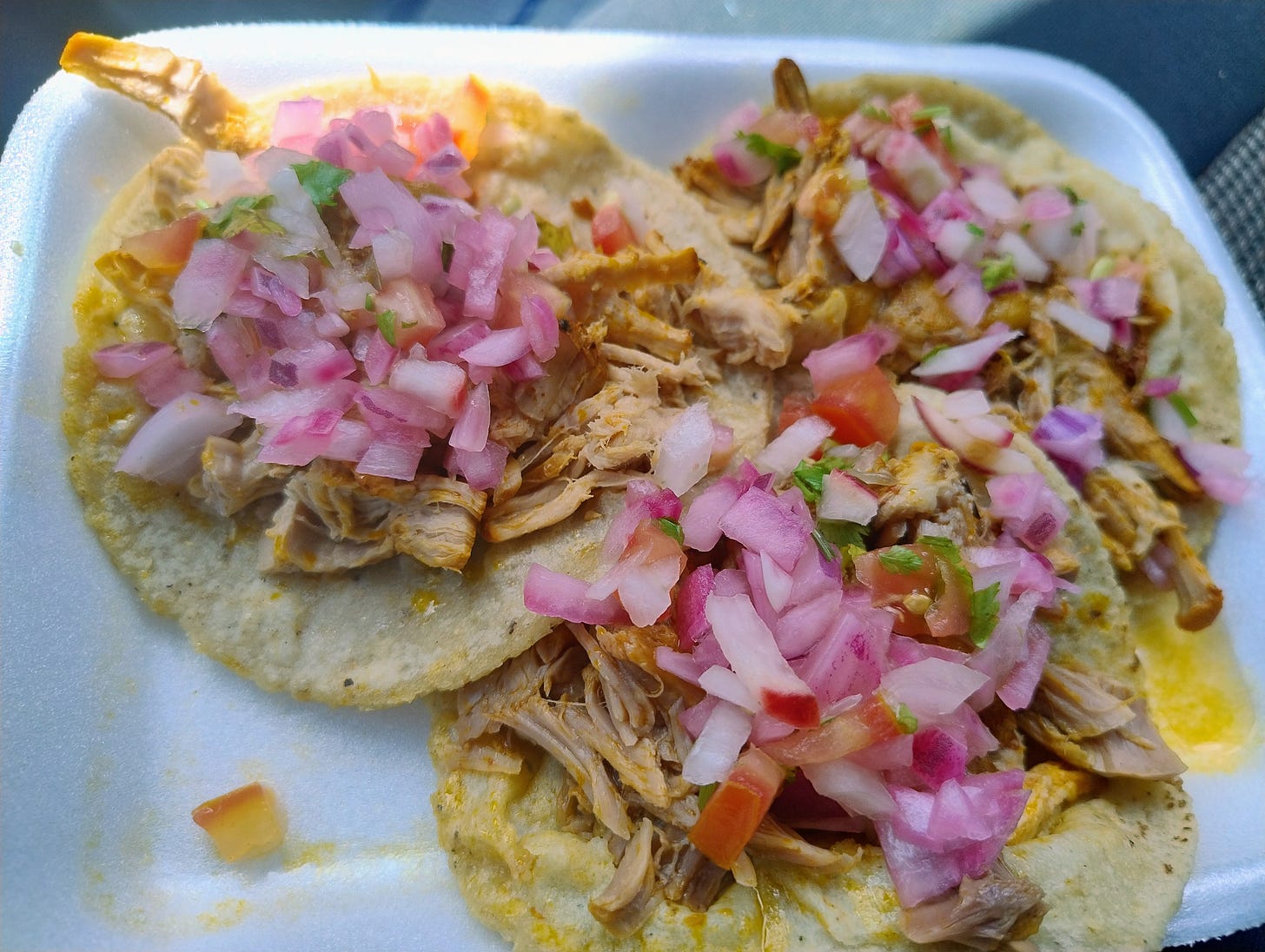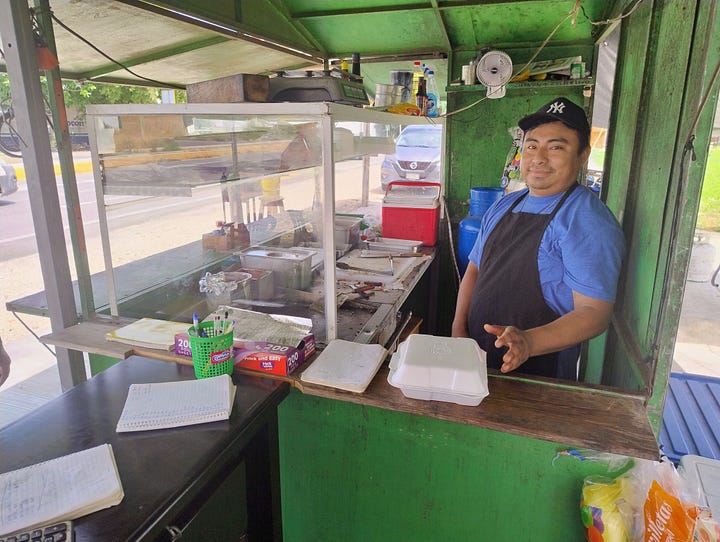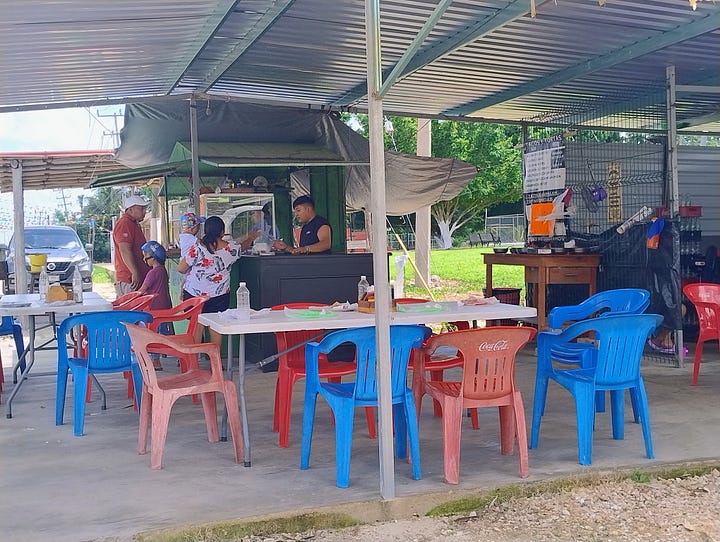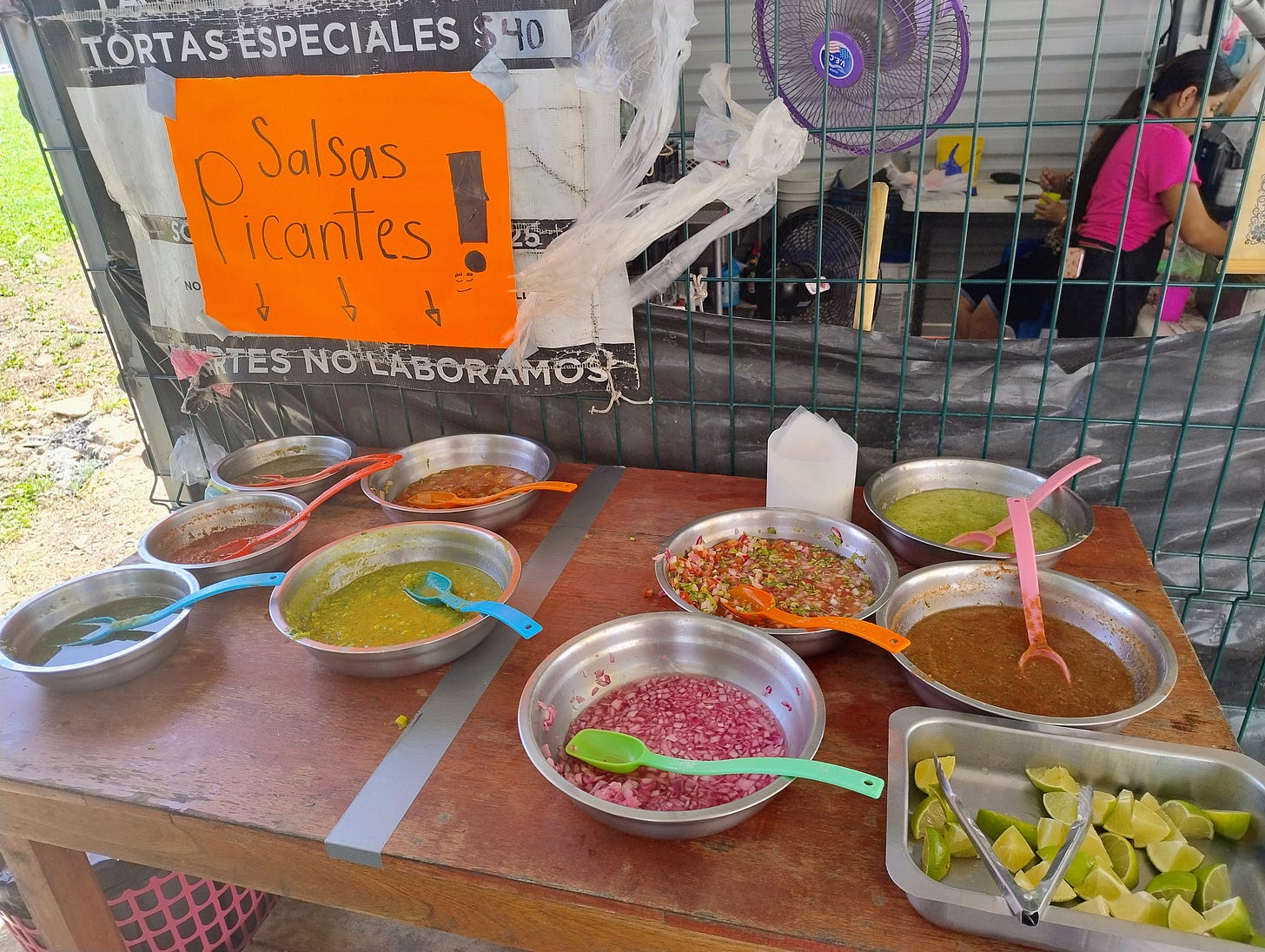Crying Over Salsa—and Loving Every Bite
A spicy lunch in the Yucatán reminds me why street food is the heart of a community.

I sputtered and coughed, my nose dripping and eyes spilling tears down my cheeks. The men around me chuckled, some laughing aloud and patting me on the back at my reaction. These men, all indigenous Maya, descended from millennia of proud, noble warriors, had been raised on this food. Spice was expected, and it was liberally added to everything, including children’s candy.
Today, after many offers, I finally accepted the invitation to try Eduardo’s family recipe for homemade habanero salsa.
The explosion of intense heat in my mouth began more than 100 years ago, traveling through four generations of indigenous Maya gardeners and winding up in the salsa I had just spooned onto my taco. Eduardo told me the seeds that sprouted his current crop of habanero peppers came from the garden of his wife’s great-grandfather. After a century, this profusion of heat and magnificent flavor had found its way into the street food stand I’d chosen for lunch—a stand where I was already a regular.
Street food is prolific in much of the world. In fact, the United States may be unusual in its lack of street food vendors. Required licensing, permitting, inspections, and other regulations make it difficult to operate, and then there’s the challenge of finding a suitable place to set up.
Here in Mexico, where my wife, Diane, and I have lived for some 12 years, we’ve come to rely on street food. Vendors are in every area where there are people. If I’m out during the day, street food is convenient and always delicious. If we want to grab something to take home for dinner, we stop at one of our favorite roadside chicken vendors, where whole chickens are seasoned and cooked on charcoal grills, then sold with a variety of side dishes for around $6.50 (US equivalent). That’s enough to feed us both with ample leftovers.
It’s not unusual to see a young child carrying a towel-draped woven basket, selling hearty, warm slabs of cornbread to restaurant patrons seated at tables, or to drivers in parked cars buying gasoline. Mothers or older sisters spend the afternoon baking, and the youngsters are the sales force. They are accepted and welcomed.
I left the house early today with six stops on my errand list. It was still early, and I hadn’t eaten yet. My first stop would be Eduardo’s food stand. Eduardo sells tacos and tortas (sandwiches), and the meat, as is common in the Yucatán, is pork. Pork prepared in various ways, from various cuts.


I knew what I wanted before I arrived: three tacos, cochinita pibil. This beloved traditional dish, native to the Yucatán Peninsula, is slow-cooked pork marinated in citrus juice and spices. Traditionally, the meat is wrapped in banana leaves and buried in a pit lined with hot stones (the pib).
Eduardo manages the pib overnight, extracting the meat in the early morning. His wife, Maria, makes a variety of salsas (including the habanero salsa that had me in tears) and guacamole, all based on family recipes passed down through generations. Son Sergio and daughter Rosa both help their parents run the business.
Their small operation has remained in the same location for more than eight years, just inside the city limits of Temozón, beside the road and next to the police checkpoint. They’re always busy. Their setup is one of the most sophisticated you’ll find—essentially a roadside restaurant without brick and mortar.
Others are much simpler. Another of my favorite vendors parks his small hatchback just outside a local gas station/convenience store. This is Mario’s place, Tacos de Canasta. Mario and his wife wake at about 4 a.m., head into their kitchen, and make dozens of inexpensive tacos. Again, pork in various forms, chicken, and my favorite—papas y chorizo (potatoes and sausage).
They’re premade, so Mario simply reaches into his warm insulated container and plucks out my order. He asks if I want onions (as usual) and salsa. I always take the pickled red onions and decline the salsa. The price is about 50 cents each (US equivalent), so for $1 or $1.50, depending on my hunger, I get a scrumptious homemade breakfast.
Street food is homemade food. It’s like eating at your neighbor’s house. These vendors have regular locations and a loyal customer base. They spend hours preparing the food before bringing it to their stands or packing it into baskets or coolers. It’s hard work, and the food is authentic and delicious.
Street food varies from region to region and country to country. If you live somewhere it’s available, I hope you take frequent advantage of this scrumptious, inexpensive part of the local culture. Avoiding street food is avoiding one of the most authentic parts of the experience.
Editor’s note: Our magazine is packed with real-life tales, insider tips, and practical advice for anyone dreaming of life overseas. From hidden food stalls to stunning coastal towns, we take you behind the scenes of expat living around the world. Subscribe today and get fresh inspiration delivered right to your inbox every month.



